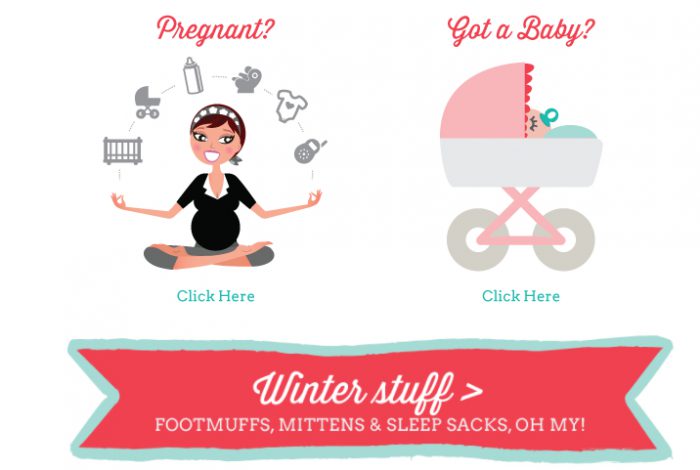
When The New York Times Co. acquired The Wirecutter for $30 million last fall, CEO Mark Thompson called its affiliate revenue–based business model — in which the site makes a small amount of money each time a reader buys something through one of its Amazon links — “very attractive.” It’s also a model with obvious appeal as digital advertising rates fall but e-commerce continues to rise.
And while The Wirecutter is perhaps the most well known affiliate revenue success story (it generated $150 million in e-commerce transactions in 2015, suggesting revenues in the low millions — not bad for a bootstrapped site), it’s certainly not the only one — and it wasn’t the first.
Meg Collins launched what would become Lucie’s List, her baby gear recommendation site, in 2010, shortly after the birth of her first daughter (and a year before the launch of The Wirecutter). Collins had been laid off from her job as a real estate developer in 2009. She and her husband had been working on a small shopping startup that used affiliate revenue as its business model; while that site didn’t make it, Collins realized the same model could be applied to baby gear. She had already been meticulously researching baby products for her daughter, and when she shared her lists of recommendations with friends and on message boards like BabyCenter, they were widely shared. “I thought, why don’t I put this on a blog somewhere? And it went from there.”She started making money from Amazon’s affiliate program and other affiliate programs quickly. The amounts were small at first: “I wondered if I could scale it, justify my existence doing it,” she said. She set little goals. “Could I make enough to pay for childcare? And then one month, I made enough to pay for childcare. ‘Can I pay for groceries?’ It just sort of went from there. I made little goals and was able to replace my income. And then we started experiencing exponential growth.”
Today, Lucie’s List publishes dozens of baby gear guides, covering everything from big purchases like car seats and strollers to little items like winter gloves that will stay on a toddler. Its weekly email newsletter has more than 360,000 subscribers and an open rate in the mid-40s, percentage-wise. Its Facebook page has nearly 90,000 followers (The Wirecutter’s has about 40,000, if you were wondering). And Collins is expanding beyond gear into areas like postpartum health and potty training. Her husband is the company’s CTO, and she has a small staff: an assistant, a contributor who specializes in gear for twins, and a social media staffer. While Collins didn’t disclose exact revenues, she said she’s making enough to fully support her family of four — in San Francisco, no less.
A turning point for the company came in the summer of 2011, when Collins posted, on Pinterest, a picture of a baby in a bathtub that linked back to her story on baby tubs. The post went viral (it was shared on Pinterest more than 230,000 times). “Pinterest really got us through those first couple of years,” she said. “We didn’t have to spend any money on marketing or advertising.” Pinterest now makes up a “relatively small” portion of Lucie’s List’s traffic; the main driver now, accounting for about 60 percent of the site’s traffic, is Google organic search, “which is also awesome, because you don’t have to pay for that.” The rest of the traffic is roughly split between her weekly emails, which are geared to your child’s age, and from social media.
Collins repeatedly told me that her success was due in part to “lucky timing,” that “anyone can do this, the barriers to entry are so low.” I argued that she was selling herself way short; when I asked what she thought made her recommendations so successful, she mentioned that she became a certified car seat technician “so I could really speak the language and understand all the nuances of car seats.” See? I said. Well, “I think I have a really good high-level understanding of things and can break it down into something that people can understand. Not that that’s rocket science. It’s not.”
It’s certainly true that Collins isn’t the only person who’s recognized that buying baby gear is overwhelming. The Nightlight, founded by former Gawker editor Joel Johnson and his sister Rachel Fracassa in 2013, is probably the closest parallel to an actual Wirecutter-for-baby-stuff (full disclosure: I have written for it); it makes money through affiliate revenue and is, according to Johnson, “profitable but not wildly so.” There’s also BabyGearLab, which makes money through advertising and affiliate links. (Lucie’s List runs a couple of ads in its newsletter, but none on the site.) “Anybody can do a niche advice site where they’re telling people the honest truth,” Collins said. But if it were that easy to build a business on it, then a lot more people would be doing it.When I asked Collins if it was irritating to see The Wirecutter get so much of the credit for the affiliate revenue model, she said, “No! I’m so glad. I love that, because they basically legitimize the business model. Brian Lam, he is my god. I look up to him, because he was a real journalist, whereas I was never anything in journalism.”
Maybe not. But she somehow still managed to build the exact kind of business that’s looking pretty attractive in journalism right now. “People are shocked when I say I’m in the black,” she said. “Why would I do this for so long if I wasn’t making money?”